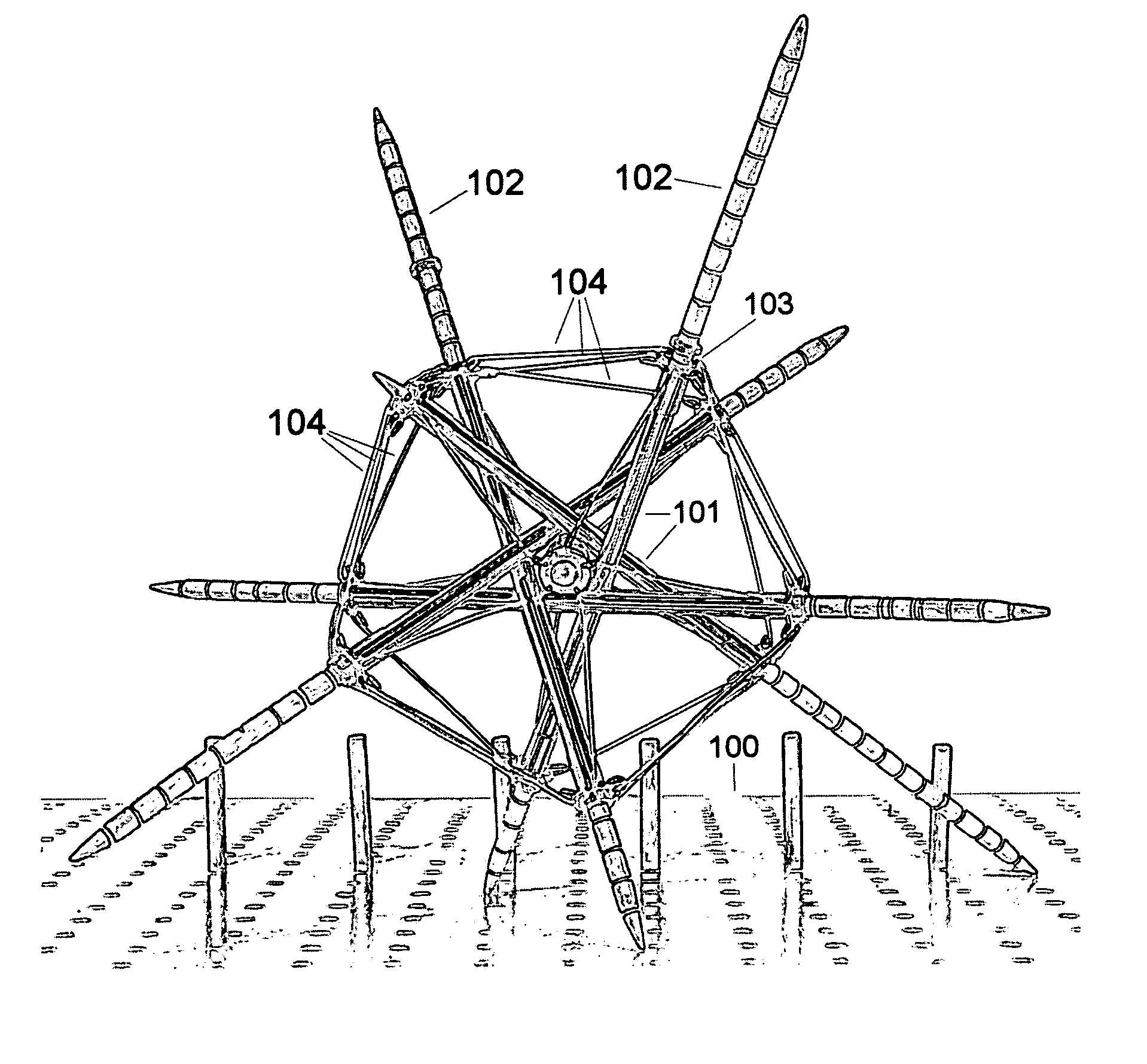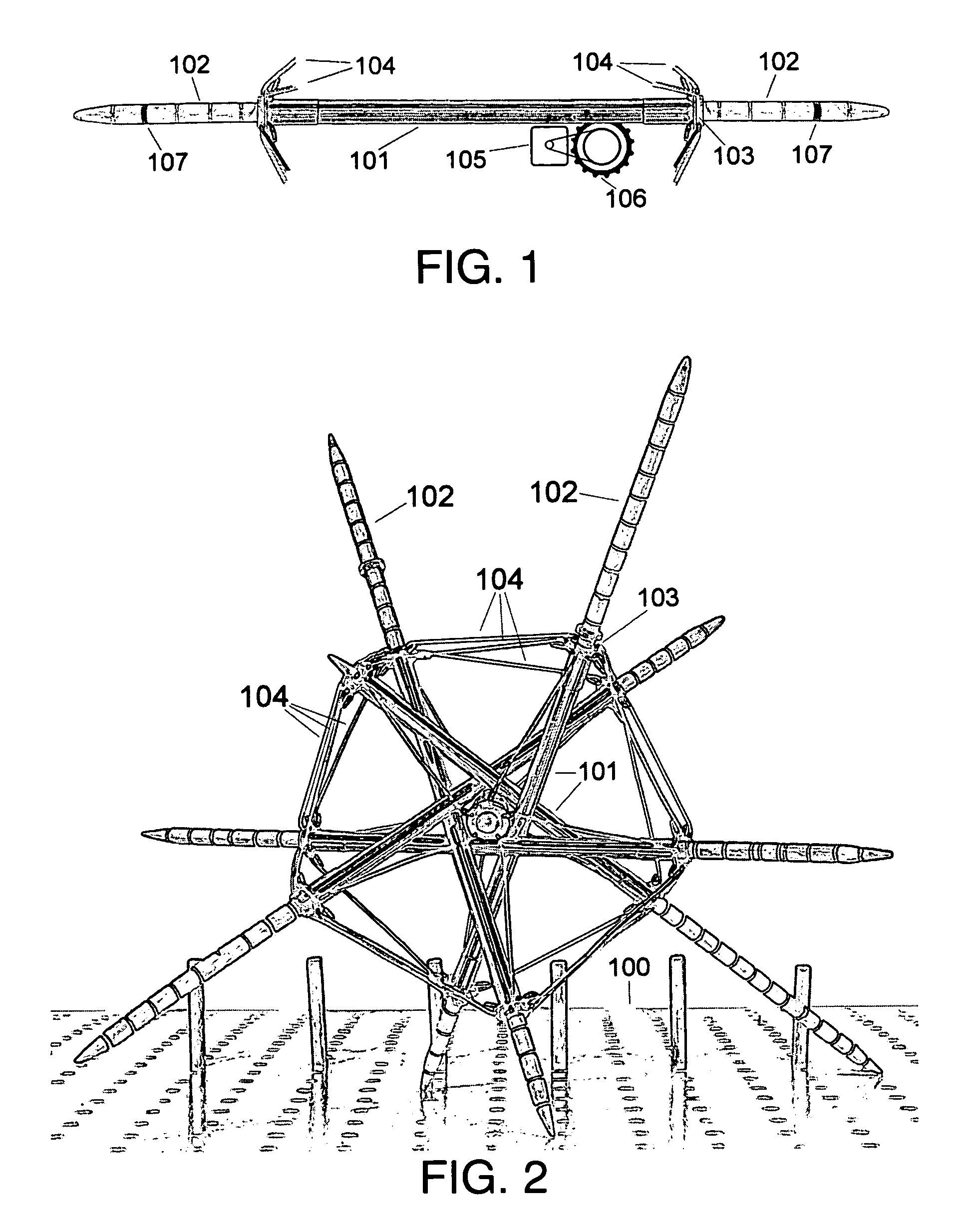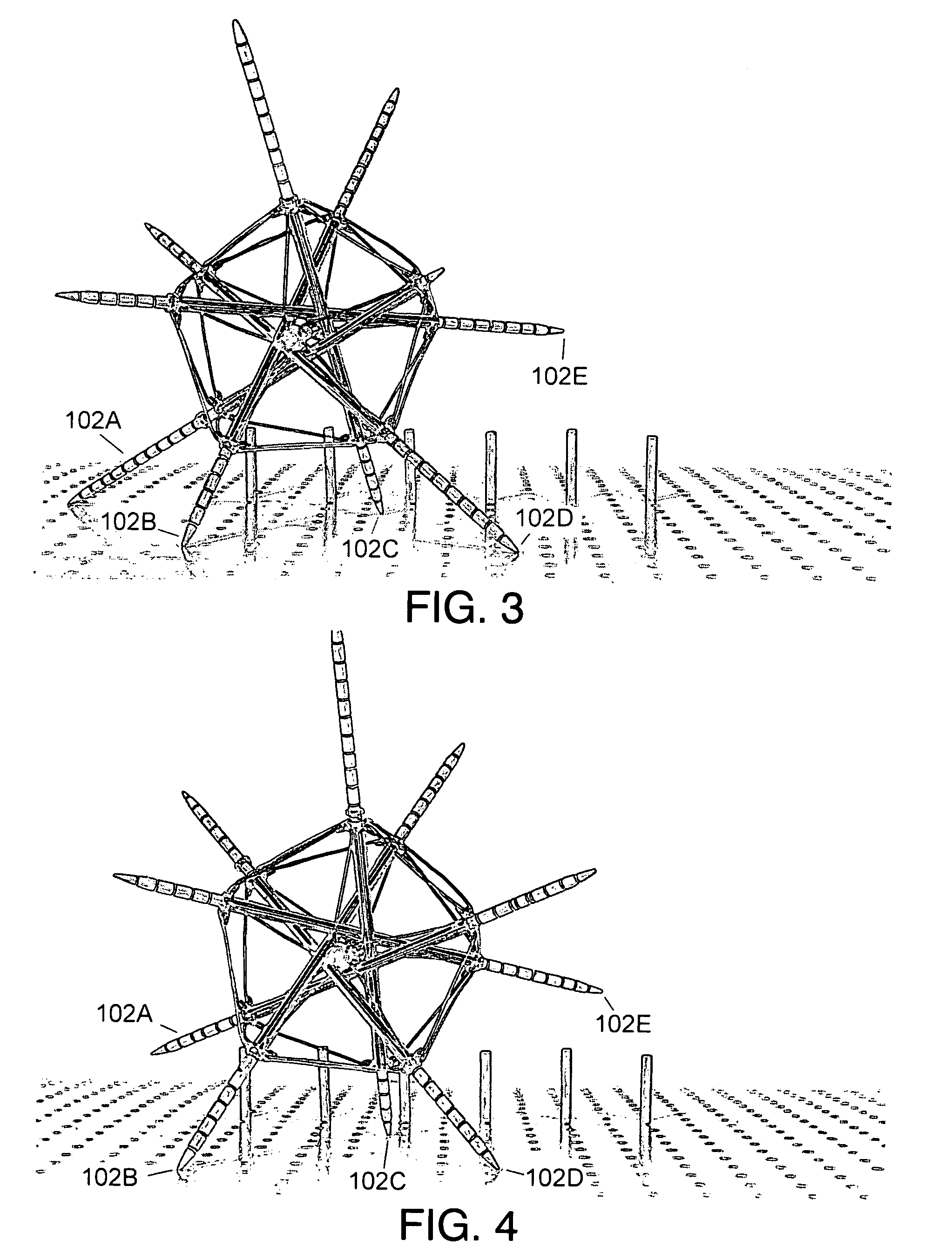Multiple leg tumbling robot
a robot and multi-leg technology, applied in the field of vehicle or robot locomotion, can solve the problems of high cost of road network, easy jamming of toy cars, and poor performance of wheels on terrain, and achieve the effect of saving weigh
- Summary
- Abstract
- Description
- Claims
- Application Information
AI Technical Summary
Benefits of technology
Problems solved by technology
Method used
Image
Examples
first preferred embodiment
[0091]In this embodiment the robot is supported by three or four legs when stationary, regardless of its orientation. FIG. 3 shows the robot standing on legs 102A, 102B, 102C, and 102D, resting on a flat surface.
[0092]The motion of the legs is simply to extend and retract, radially from the approximate center of the robot. The robot in its entirety tumbles or rolls because of coordinated motion of the legs.
[0093]To start moving in an arbitrary direction, the one or two legs in the direction of the desired motion (of the three or four legs on the ground) are retracted, and the one or two trailing legs are extended. This starts the robot rolling.
[0094]FIG. 4 shows the robot of FIG. 3 slightly rotated. It shows leading legs 102C and 102D retracted, and trailing leg 102B extended, and leg 102A off the ground.
[0095]FIG. 5 shows continued tumbling motion; supported by legs 102B, 102C, and 102D.
[0096]FIG. 6 shows trailing leg 102B off the ground and leg 102E has touched the ground for the ...
second preferred embodiment
[0115]Compared to the first preferred embodiment, this vehicle is more complex and more capable. This vehicle moves based on the same principles as the first embodiment. This embodiment is meant to serve as a remotely controlled reconnaissance or surveillance robot.
[0116]FIG. 10 shows a fully retractable leg assembly. It is like the leg assembly of FIG. 1 except that the leg member 102 is short enough to fit within the cylinder 101. This allows the legs of this vehicle to be fully retracted when not supporting the vehicle. This is important because the retracted legs will not get in the way of possible overhead obstacles, an important advantage in areas of overhead vegetation or when navigating through damaged buildings.
[0117]In operation, the intermediate sliding sleeve 108 is extended from the cylinder 101 by half the distance that the leg member 102 is extended. This telescoping action allows this dual-acting leg assembly to extend nearly as far as the simpler leg assembly of FIG...
third preferred embodiment
[0139]The robot of FIG. 16 locomotes by tumbling in the same way as the first preferred embodiment.
[0140]To fold the robot of FIG. 16, one pulls the five leg ends surrounding the north pole towards that pole, and the five surrounding the south pole towards that pole. The ten equatorial cords stretch, and the polar wires either become loose or retract, depending on the exact design, as can be seen in FIGS. 17 and 18.
[0141]If the robot needs to fold itself, without outside influence, it incorporates a means to retract its north and south polar tension cables simultaneously. The ten equatorial tension cords stretch or extend in response. The ends of all the legs draw together at the poles, as can be seen in FIGS. 17 and 18.
[0142]FIG. 17 shows the same robot of FIG. 16 partially folded. The polar tension wires are partly retracted, which causes the equatorial cords to stretch.
[0143]FIG. 18 shows the fully folded configuration of the robot. The polar wires are fully retracted and the fiv...
PUM
 Login to View More
Login to View More Abstract
Description
Claims
Application Information
 Login to View More
Login to View More - R&D
- Intellectual Property
- Life Sciences
- Materials
- Tech Scout
- Unparalleled Data Quality
- Higher Quality Content
- 60% Fewer Hallucinations
Browse by: Latest US Patents, China's latest patents, Technical Efficacy Thesaurus, Application Domain, Technology Topic, Popular Technical Reports.
© 2025 PatSnap. All rights reserved.Legal|Privacy policy|Modern Slavery Act Transparency Statement|Sitemap|About US| Contact US: help@patsnap.com



